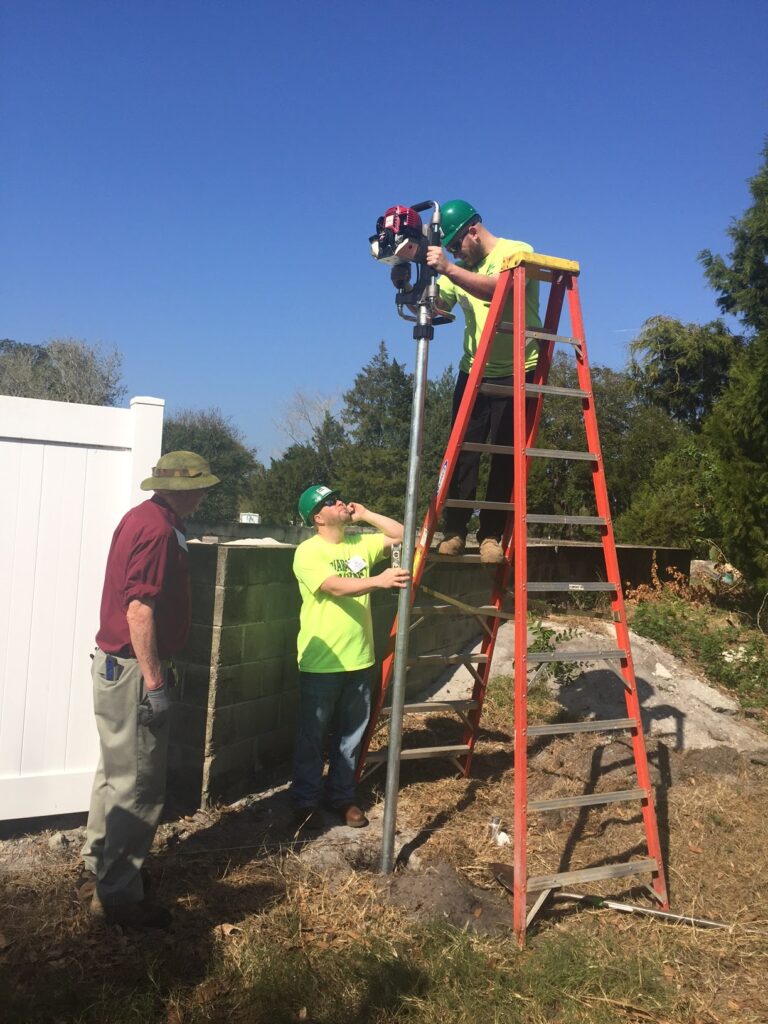By Clint Iams, Log Cabin Fence Company and NAFCA Executive Director, Amity, PA

A benefit to working with NAFCA is manufacturers and contractors have easy, direct access to each other in unique ways.
In November, Ashley Haffner from Rhino Tool Company contacted NAFCA asking if we had any examples of their Rhino driver in use at our Fence Training School. I forwarded the email to Mart Prost (FTS School Director). He was able to quickly provide a few pictures of our students using their Rhino driver during our school.
Through the email conversation, Ashley mentioned she was looking for contractors who choose to drive their post instead of setting in concrete. We added NAFCA board secretary, Dustin Weimann to the email conversation as I know he uses a Rhino driver at his business DD Fences.
Using some of NAFCA’s input, Rhino’s Sales Manager, Steve Orrick, put together the following video:
If you click on the following link you can even record a video response to Steve, letting him know your thoughts. If would like, you can contact Steve directly here. Also, below is a White Paper PDF he produced on the subject. You can download and review the various pros/cons to regarding setting vs driving posts.
At Log Cabin Fence, we have driven farm fence posts for nearly four decades. Utilizing our experience in the fence industry (and at setting posts), we manufacture the contractor grade post driver called the Pro Driver.
We set literally thousands of posts a year in our fence and fabric structure installation businesses. We use the driven post method setting wood posts that are the foundation of standard 4′ tall farm fence through 8′ tall anti deer fence. Further, we routinely set 6″x6’x10′ square wooden posts that are the foundation for the installation of our Advantage Structures. All of the above are set without the need or expense of concrete. We can install the fence/structure the same day the posts are set; no need to wait for the concrete to cure.
Occasionally I will speak to a local farm association or group and provide a basics of fence building seminar. I usually call it “Fence Building 101”. I use the following information in my presentation:

We complied this listing of facts from our years and experience in the industry.
SUMMARY: Depending on if you are driving chain link steel posts or wooden farm fence posts, there are options large and small to drive posts as opposed to setting in concrete.
For more information on the companies above, you can contact Rhino Tools here and Log Cabin Fence here.
The debate between setting post in concrete and driving can be a heated one amongst fence contractors. Where do you stand?
